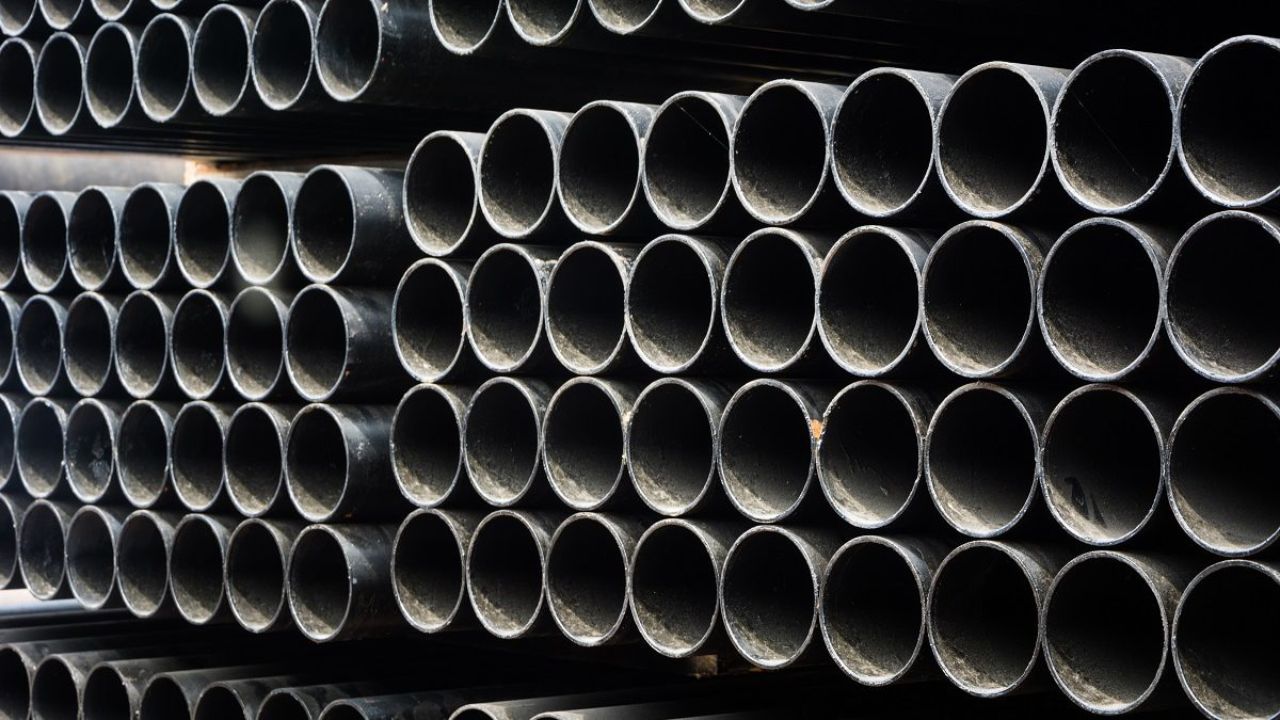It is a well-known fact that galvanized pipes can be considered a solid answer in terms of offering strength and durability in construction and industrial purposes. When the conditions are humid, under intense temperatures, and the piping systems are exposed to chemicals or pollutants, then the lifespan of the piping systems becomes a vital issue. Galvanized pipes have a protective zinc coating that is highly practical and economical in terms of fighting corrosion and improving the structural strength even over long durations. Galvanized Pipe Specification defines the size, coating, and standards the pipe must meet for safe and durable use.
The Science of Galvanizing
Galvanization means that the steel or iron pipes are coated with zinc. This is a zinc coating that acts as a shield between the metal and the exterior. Two main processes of galvanization exist they are hot-dip galvanizing and pre-galvanizing. Hot-dip galvanizing entails dipping the steel pipe in a molten zinc bath where the metallurgical bond is created. The pre-galvanized pipes, however, are galvanized before being manufactured. Although both methods are used to protect against corrosion, hot-dip galvanizing has a thicker and more durable coating, and thus it is more appropriate in the very severe conditions.
The zinc is a sacrificial anode, so in case the coating should be scratched or otherwise damaged, the zinc will oxidize to prevent the steel beneath it rusting and deteriorating. This corrosion-protective property of galvanized coating is particularly beneficial in the circumstances where abrasion is unavoidable.
Moisture-Rich and Marine Environment Protections
Moisture is one of the most widespread troublemakers of the metal piping systems. Steel pipes are very prone to rust and corrosion in coastal areas, or in high humidity places, when steel is not covered by protective material. Galvanized pipes are highly suitable to this kind of environment because the zinc coating of the galvanized pipes has its own water resistant properties. The zinc coating acts as a shield that does not allow the steel to come in contact with moisture present in the air or water.
Galvanized pipes have also been useful in the piers, boat docks, and offshore structures in marine areas. They are resistant to saltwater corrosion and therefore, they are suitable in such hazardous applications. Galvanized pipes, when well looked after, can even in salty or humid environments last decades, which lowers the cost and frequency of maintenance substantially.
Surviving the Industrial Pollutants and Chemical Exposure
Severe industrial working conditions usually lead to exposure to chemicals, fumes, and pollutants that can accelerate the process of corrosion of metal that is not coated. In these environments, galvanized pipes offer an additional defense. Although zinc is a chemical that reacts with other substances, it is usually resistant to an extensive variety of substances present in industrial systems. The highly adherent, dense coating formed by the hot-dip galvanizing process provides additional abrasion resistance, resistance to chemical splashes, and airborne contaminants.
This qualifies galvanized steel tubing to be a viable alternative in chemical processing complexes, manufacturing units, and wastewater treatment units. Galvanized pipes have a longer life than non-coated or painted pipes even in an environment where there is occasional exposure to chemicals.
Resistance to High and Low Temperatures
The other issue that makes galvanized pipes a long-lasting product in extreme environments is the performance of galvanized pipes under extreme temperatures. In both extreme summer heats and freezing cold temperatures, galvanized pipes are structurally stable and are not affected by the thermal expansion and contraction effect, compared to many other materials. The zinc coating can withstand the changes in temperature without developing micro-cracks or peeling off, which may cause corrosion.
This thermal resilience causes galvanized pipes to be perfectly suited to outdoor systems and uncovered mechanical systems as well as infrastructure in areas of variable climates. They are commonly applied in cold-weather areas as fencing and scaffolding, and irrigation systems, where strength and durability are the most important aspects.
Long-term Cost-Effectiveness and Dependability
In addition to direct physical benefits, galvanized pipes have excellent long-term financial benefits. They last long, and hence there are minimal repairs or replacements, especially under harsh conditions. Also, the cost of galvanized steel is usually cost effective when compared to materials such as stainless steel which could be equivalent when it comes to corrosion resistance but at a relatively higher material cost.
Galvanized pipes also save cost on minimal maintenance. These pipes do not require much besides regular inspection once they are installed. The fact that they have predictable performance and a low failure rate contributes to the reliability aspect and ensures that they are the favorite of engineers and contractors who wish to achieve long-term success in their infrastructure.
Conclusion
Galvanized pipes are also a reliable and long-lasting alternative for projects that have to work under the adverse conditions of the environment. They provide decent protection against moisture, chemicals, and extreme temperatures via their zinc protection (which is corrosion resistant). Galvanized piping employed in marine, industrial, or structural applications ensures dependability, structural strength, and peace of mind to the developers and the end-users. The galvanized steel piping has been a constant companion in the creation of long-lasting and sustainable infrastructure against environmental forces.

